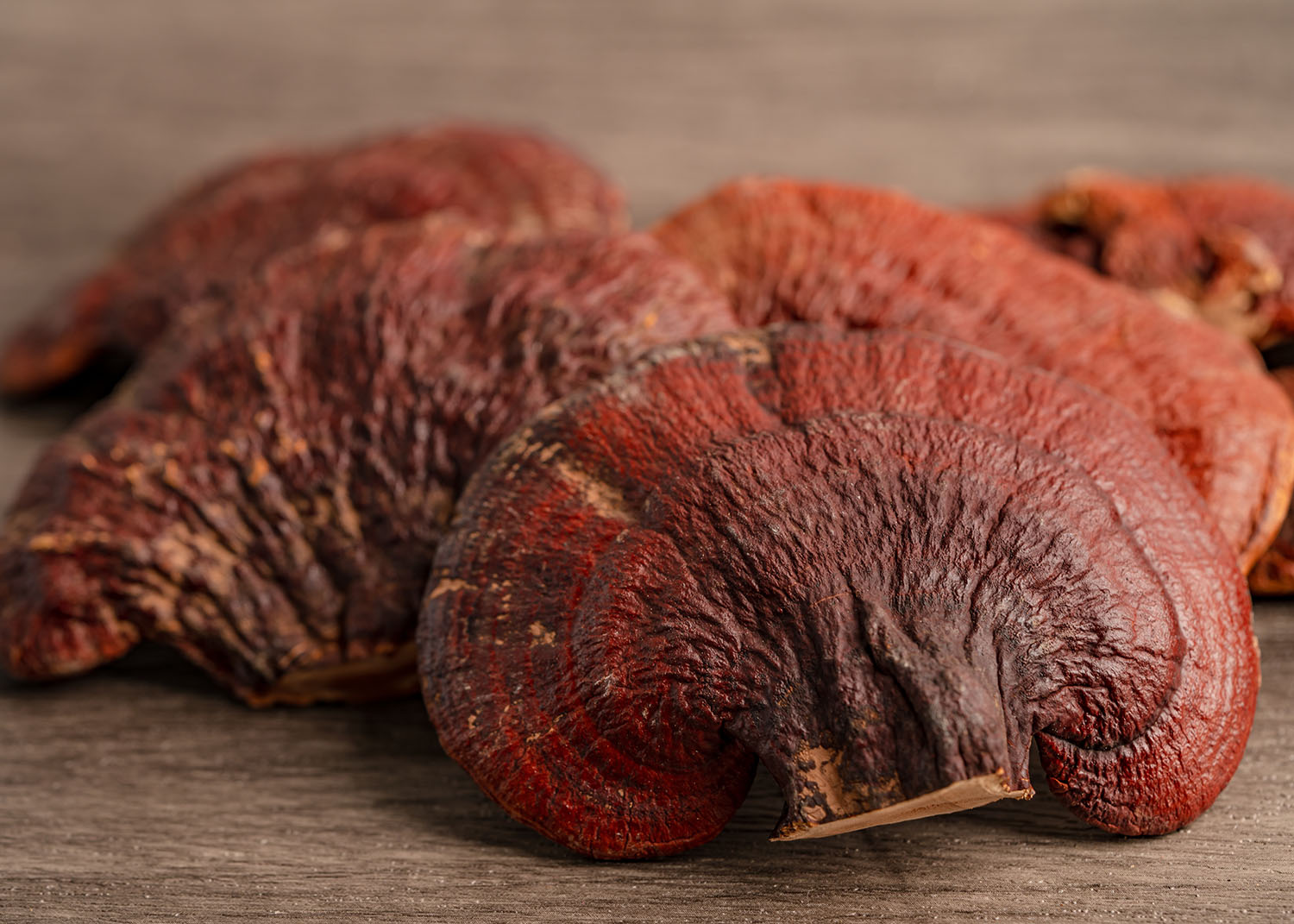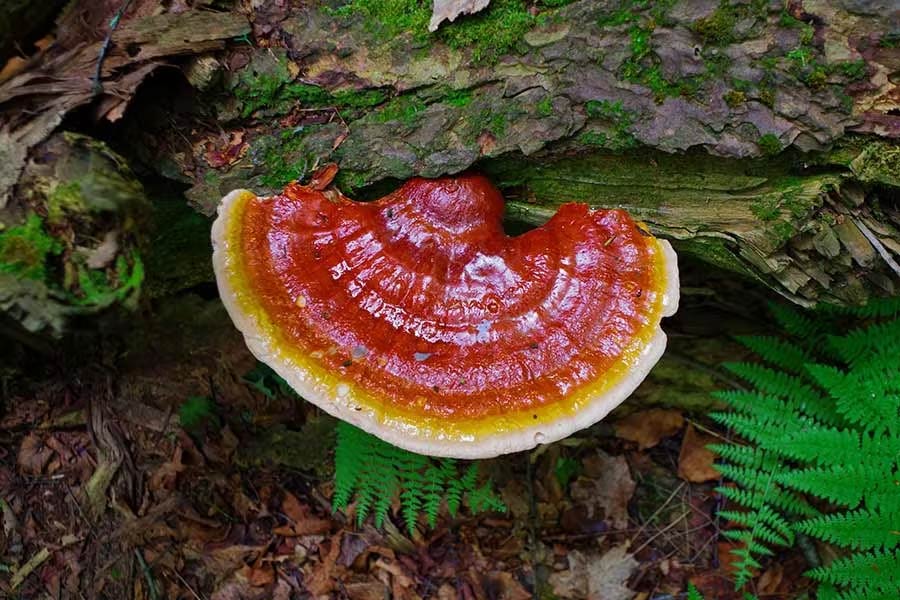
medicinal
Reishi
genus
Ganoderma
Common names
Reishi ('spirit mushroom in Japanese), Hemlock Varnish Shelf, Hemlock Reishi, Ling Zhi ('divine mushroom' in Chinese).
Taste
Very bitter and woody. Edible but very though, not recommended in a raw form.
Cooking
Usually ground and boiled into a tea or tincture, rather than cooked as food.
Size, texture & Color
2-30 cm wide and 4-8cm thick - Circular fan-shaped.
Surface grooved, varnished with a hard/leathery texture.
Bands of brown, red, orange, yellow and white.
Health benefits
Reishi helps to enhance the immune system, reduce stress, improve sleep, and lessen fatigue, reduce blood pressure and cholesterol.
With over 300 medicinal compounds, Reishi has a reputation as a cure-all in Asia due to its extensive historical use. Being researched in the development of drugs for areas including antibiotics, antivirals, anti-cancer compounds.
History and culture
More than 2,000 years ago, in the Changbai Mountains, Chinese healers made the first discovery of the reishi mushroom. Although the “Perpetually-White Mountain Region” mountain range in the north is well known for its icy temperatures, the base of the mountain is home to a sizable temperate hardwood forest where the rare reishi mushroom thrives.
In ancient Chinese writings, the mushroom is described as an elixir of immortality, and secret locations are mentioned where it is rumoured to grow. The reishi mushroom has long been used as a talisman of luck, healing, and wellness in Chinese culture. Healers thought it had strong anti-aging properties.

Growing infos.
Incubation & fruiting temperature
Incubation at 21-27°C - Fruiting best at 23-29 °C
Preffered substrate
Hardwood sawdust supplemented. Sterilised you substrate.
Innoculation to fruiting time
2 - 3 weeks in incubation, add up 4 - 6 weeks for the fruiting body to reach maturity.
Yield & number of flushes
Good.
Difficulty
Easy. Aggressive mycelium capable of outcompeting most wild fungi and bacteria due to its antibiotic and antifungal propreties.
